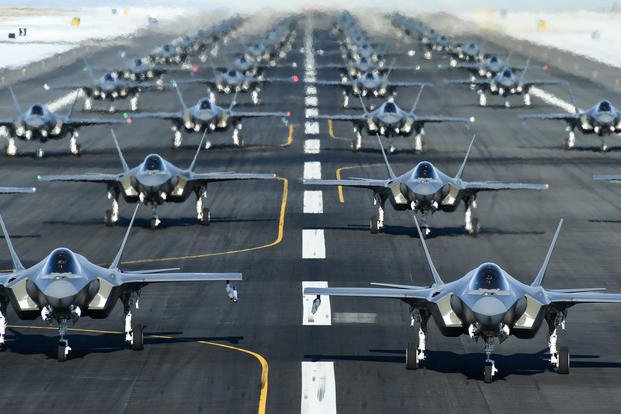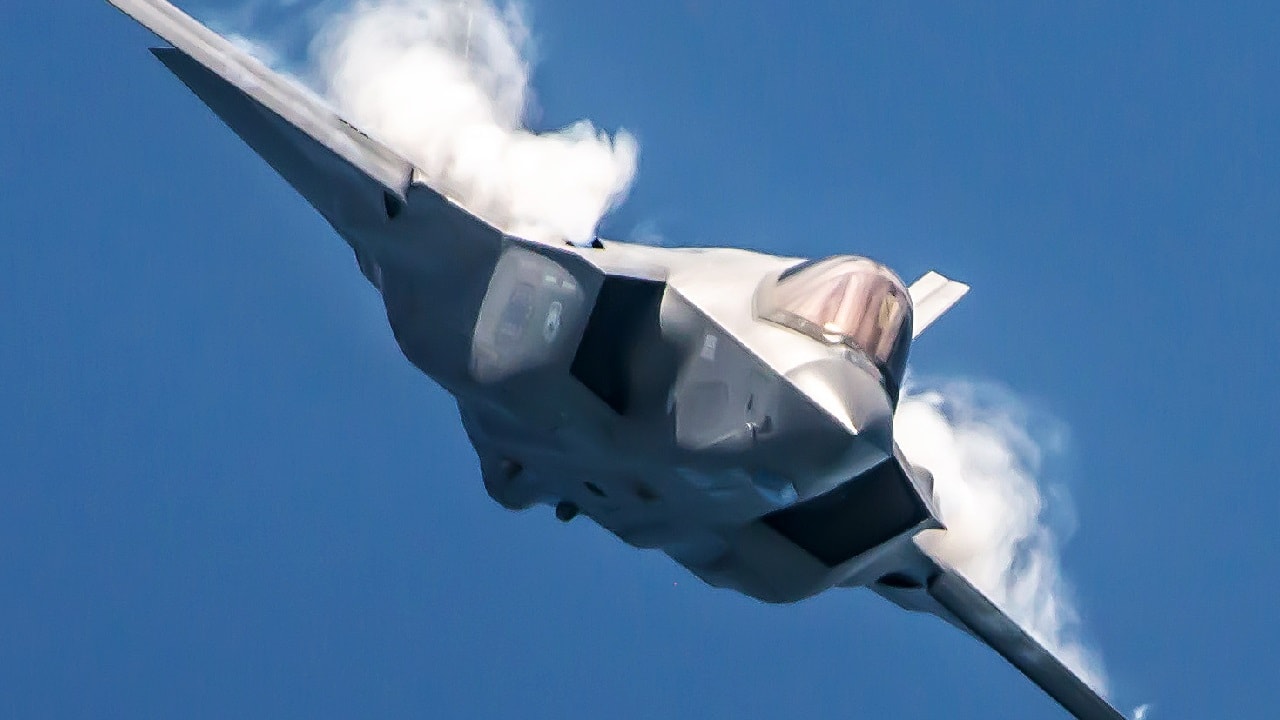Here Comes the F-35: Throughout the spring and early summer, Russian aviators operating in Syria acted as if they were looking to engage U.S. pilots. On July 23, a Russian aircraft had an extremely close call with a U.S. unmanned aerial vehicle.
“Russian fighter aircraft flew dangerously close to a U.S. MQ-9 drone on a defeat-ISIS mission, harassing the MQ-9 and deploying flares from a position directly overhead, with only a few meters of separation between aircraft. One of the Russian flares struck the U.S. MQ-9, severely damaging its propeller. Fortunately, the MQ-9 crew was able to maintain flight and safely recover the aircraft to its home base,” Lt. Gen. Alex Grynkewich, commander, 9th AF, and combined forces air component commander for CENTCOM, said following the incident.
“The Russian fighter’s blatant disregard for flight safety detracts from our mission to ensure the enduring defeat of ISIS. We call upon the Russian forces in Syria to put an immediate end to this reckless, unprovoked, and unprofessional behavior,” Grynkewich added.
The incident in July followed a pattern of close calls in the skies over Syria, where Russian and U.S. aircraft operate. However, Russian aggression in the past month has decreased significantly — and for one notable reason.
Just days after the Russian fighter had its all-too-close encounter with the MQ-9, a U.S. Air Force squadron of F-35 Lightning II fighters arrived in the CENTCOM Area of Responsibility, augmenting the A-10s and F-15s that were already operating in the region.
Russia Won’t Mess With the F-35
The F-35 fifth-generation stealth aircraft were deployed to the Middle East as much to deter Iran, but Russian pilots have certainly tempered their actions.
Air & Space Forces Magazine reported on Monday that Russian pilots have stopped dropping flares in front of Reaper drones.
“We have seen a decrease in the level of aggressiveness of the Russian activities against our MQ-9s,” a senior official told the news outlet, attributing the Kremlin’s actions to the presence of F-35s, and added that the U.S. has not changed where it flies the UAVs on defeat-ISIS missions.
The U.S. still operates the drones in Northwest Syria, an area where ISIS militants continue to maintain a presence but that the Kremlin considers airspace they share with the regime of Bashar Al Assad.
“It’s too early for us to tell if that’s a major change of behavior or just an aberration,” the U.S. official further noted of the Russian operations. “Some of that may be in response to kind of our increasing presence as we brought the F-35 in.”
The Pentagon has not directly commented on the apparent shift in Russian operations and didn’t directly acknowledge how Russian pilots have become less aggressive.
“In terms of Russian aggression or unprofessional, unsafe behavior, I would refer you to the Russians to speak to that as into why there’s been a decrease,” Deputy Pentagon Press Secretary Sabrina Singh told reporters on Aug. 21. “We have, of course, always followed the proper procedures when conducting our own operations.”
In March, a Russian Sukhoi Su-27 jet fighter struck a U.S. Air Force MQ-9 Reaper over the Black Sea. Russia actually awarded the pilots medals for their actions, while the U.S. condemned the reckless behavior.
More Than the F-35
Also last month, more than 3,000 U.S. Sailors and Marines of the Bataan Amphibious Ready Group and 26th Marine Expeditionary Unit arrived in the Middle East. They came as part of an announced Department of Defense deployment to deter the Islamic Republic from aggressive activity in the Strait of Hormuz.

The active duty 388th and Reserve 419th Fighter Wings conducted an F-35A Combat Power Exercise with 52 aircraft at Hill AFB, Utah, Jan. 6, 2020. 388th Fighter Wing photo via Facebook.
Iran has attacked or seized about 20 merchant vessels since 2021.
“Through these actions, the United States is demonstrating commitment to ensuring freedom of navigation and deterring Iranian destabilization activities in the region,” the Pentagon stated. “We will continue to work with like-minded allies and partners who are committed to the free flow of commerce to take appropriate, coordinated actions against threats to this fundamental principle of the rules-based international order.”

F-35 Elephant Walk 2020
Author Experience and Expertise
A Senior Editor for 19FortyFive, Peter Suciu is a Michigan-based writer. He has contributed to more than four dozen magazines, newspapers, and websites with over 3,200 published pieces over a twenty-year career in journalism. He regularly writes about military hardware, firearms history, cybersecurity, politics, and international affairs. Peter is also a Contributing Writer for Forbes and Clearance Jobs. You can follow him on Twitter: @PeterSuciu.
From the Vault
The Navy Sent 4 Battleships To Attack North Korea
‘Sir, We Hit a Russian Submarine’: A U.S. Navy Sub Collided with a Nuclear Attack Sub

